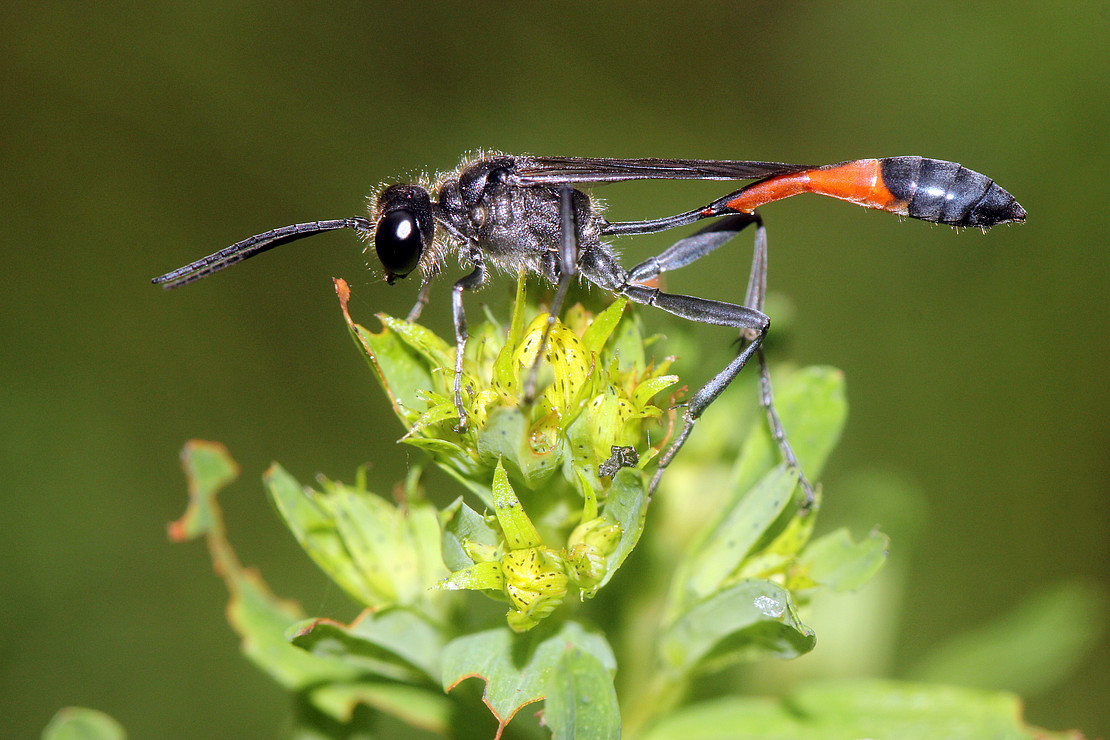Meldung
Insect diversity threatened even in nature reserves
 Image: Helge May.
Image: Helge May.Why is insect diversity declining in Germany and what can be done about it? Eight scientific institutions led by NABU investigated this question for four years in the DINA research project (Diversity of Insects in Nature Conservation Areas). Prof. Dr. Birgit Gemeinholzer, head of the Department of Botany at the University of Kassel, and her team, in particular Stephanie Swenson, delivered results on the interaction between insects and plants.
As the project partners announced today in Berlin, pesticides and land use that is not compatible with nature are partly responsible for the decline in diversity. In order to reverse the trend of insect extinction, pesticide pollution must be halved across the entire landscape.
The DINA project recorded the diversity of flying insects along observation points at regular intervals using standardized trapping methods, as explained on the project page. The DNA of the species is then compared with DNA reference lists of known species. The aim was to generate the most comprehensive data collection of flying insect species in protected areas in Germany to date.
At the same time as recording the animal DNA at the Museum König in Bonn, scientists at the University of Kassel also determined plant traces in the samples using DNA-based methods. This enabled them to show which plants the insects visit at which times of year in the nature reserves, which had not been possible before. In addition, species lists were compiled and rare, endangered plants or alien species were identified. "For the first time, it was shown that plant DNA metabarcoding can be used to detect rare, endangered and alien species as well as the entire species spectrum. This method is suitable for standardized, automated routine monitoring, although there is still a need for research to optimize it," says Birgit Gemeinholzer.
With regard to insect biodiversity, Prof. Dr. Gerlind Lehmann, DINA project manager at NABU, said: "There was great concern when the extent of the dramatic decline in insect diversity became public six years ago. But there was a lack of data to halt the loss of biodiversity and turn it into a positive trend. DINA has created the most comprehensive database to date on the number and diversity of flying insect species in the selected protected areas in Germany."
"The results of the research project paint an alarming overall picture: even in nature reserves, the loss of biodiversity and habitats is continuing unabated. Pesticides and land use that is not compatible with nature are partly responsible for this. In order to reverse the trend of insect extinction, pesticide use must be halved across the entire landscape. Their use should be banned in particularly sensitive protected areas. We also need to create safe spaces for flying insects - for example through buffer strips and connected biotope networks," says Jörg-Andreas Krüger, NABU President.
Based on the findings of the DINA project, the research consortium recommends three key action points for the effective protection of insect diversity:
1. prioritize biodiversity in objectives and planning for protected areas: To ensure that biodiversity is actually protected in designated areas, the surrounding agricultural land must be included - for example, when developing strategies and planning measures.
2. enable nationwide monitoring and site-specific risk analyses: Research bases must be created through monitoring and pesticide analyses in order to better assess the risks to insect populations. During implementation, areas particularly worthy of protection must be prioritized.
3. promote the participation of all relevant stakeholders: For conservation measures to be implemented effectively at the local level, all stakeholders from landscape management, agriculture, nature conservation, politics and civil society must be involved. In addition, biodiversity must be established as an important component of education for sustainable development.
Background
The DINA (Diversity of Insects in Nature protected Areas) project was funded by the Federal Ministry of Education and Research (BMBF) from May 2019 to April 2023 with a total of 4.6 million euros. The insect diversity and its impact from the surrounding agricultural land was recorded at 21 representatively selected locations across Germany.
DINA project partners:
- Entomological Association Krefeld e.V. (EVK)
- Bonn-Rhein-Sieg University of Applied Sciences, International Center for Sustainable Development (IZNE)
- ISOE - Institute for Social-Ecological Research Frankfurt/Main
- Leibniz Institute for the Analysis of Biodiversity Change (LIB)
- Leibniz Institute of Ecological Urban and Regional Development (IÖR)
- Nature and Biodiversity Conservation Union Germany (NABU)
- Rheinland-Pfälzische Technische Universität Kaiserslautern Landau, AG Ökotoxikologie und Umwelt
- University of Kassel (UniKS)
This text is based on a NABU press release.
Link to the DINA policy brief - key findings and recommendations: xxx
Press photos of the DINA project: https://bilddatenbank.nabu.de/Login.jsp?colID=FzsgwPzV
Contact:
Roland Panter
NABU Press Office
Tel. +49 (0)30.28 49 84-1510
Prof. Dr. Birgit Gemeinholzer
University of Kassel
Department of Botany
https://www.uni-kassel.de/fb10/institute/biologie/fachgebiete/botanik/prof-dr-birgit-gemeinholzer